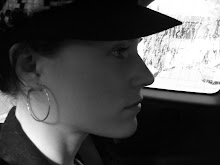(This post goes with the picture on the previous post - I've been having problems with my blog!)
I'm looking at a picture that's been 'played with' in Picnik.
It is actually a really cool tool that is used well in association with FlickR. In my previous post I gave a few ideas about how FlickR can be used within the Learning Engagement Relate-Create-Donate cycle (Kearsley & Shneiderman, 1999). Picnik adds another ICT Learning Resource into the mix that can allow for a more successful completion of a given task (Oliver, 1999). Once groups have found/taken a photo they are able to manipulate it (CREATE) in so many different ways that just the use of the tool itself makes the Learning Task broad enough to ensure opportunities for engagement (Oliver, 1999). Also, its free and online, so learners can access it from anywhere.
I like the idea for using these tools as a platform for teaching and learning around Visual Literacy. The Learning Manager can find a photo on FlickR, perhaps manipulate it with Picnik, then present it to the class as a text, which the class can then deconstruct. Once the class has had a number of learning experience around visual literacy and constructing meaning through images, the task may then be for students to create a visual text for themselves. Obviously it would be within the context of the unit e.g. global warming - learners have to create a visual text that represents their attitude towards global warming, either taking the photo themselves, ten manipulating it using picnik, or finding an existing image on FlickR and manipulating it with Picnik. Learners will need to be able to explain and justify the tools and chioces they made in the manipulation process. The images can then be reloaded onto FlickR, or published elsewhere, either online or in print, as a form of 'protest' against global warming.
There are a number of other ideas of how you could use this tool in the classroom that come to mind, but I will leave you now to think about how you could use it in your own classroom!
Kearsley, G. & Shneiderman, B. (1999). Engagement Theory: A framework for technology-based teaching and learning.
Oliver, R. (1999). Exploring strategies for online teaching and learning. Distance Education, 20(2), 240-254.
Subscribe to:
Post Comments (Atom)

No comments:
Post a Comment